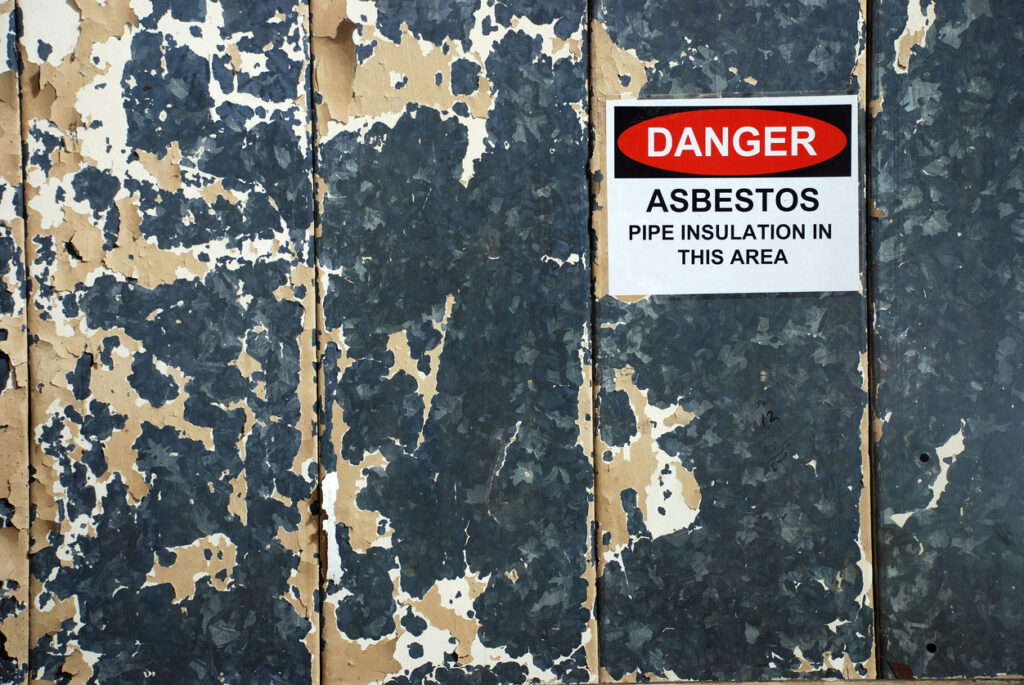Although the use of asbestos has declined dramatically in the U.S., it’s still used in certain industries. Health problems caused by asbestos exposure can be serious, so it’s vital to protect yourself. At Nappa, Monterosso & Poznansky, LLP, our occupational disease lawyers help injured workers in the greater New York City understand their rights and help them obtain the workers’ compensation benefits they need to protect their health and financial security. Here, we discuss where this dangerous substance may be found and how to keep yourself safe from asbestos exposure.
What is Asbestos?
A naturally occurring mineral known for its heat resistance and insulating properties, asbestos was once used extensively in various industries and products. Its strength, durability, and resistance to heat and chemicals made it particularly popular in the construction sector and industrial settings. Although many asbestos-containing products have been banned in the U.S., it is still used in certain applications.
How Asbestos is Used Today
Some current commercial uses of asbestos include:
- Roofing materials
- Vinyl tile
- Corrugated sheeting
- Cement pipe
- Brake pads
- Gaskets
- Vehicle clutches
- Heat-resistant textiles
Health Risks of Asbestos Exposure
The health risks associated with asbestos exposure are well-documented. Inhalation of asbestos fibers can lead to serious occupational lung diseases such as asbestosis, mesothelioma, and other types of lung cancers. Asbestos exposure symptoms don’t appear right away – it can take decades of prolonged exposure for someone to become ill. Symptoms and signs of asbestos exposure include:
- Persistent dry cough
- Shortness of breath
- Chest pain or tightness
- A dry, crackling sound in the lungs when inhaling
- Coughing up blood
- Loss of appetite
- Weight loss
- Fingertips and toes that are wider than normal, known as clubbing
If you or a loved one is experiencing any of these symptoms, see a doctor as soon as possible. If you’ve already been diagnosed with an occupational lung disease, finding experienced attorneys for asbestos exposure claims is vital. There are several avenues that may be available to help with medical bills and other compensation, including workers’ compensation, asbestos trust funds, and the New York City Asbestos Litigation (NYCAL) court.
Learn about the Dangers of Asbestos Exposure
Being aware of asbestos exposure symptoms and common sources of exposure can help you protect yourself. Familiarize yourself with the asbestos-containing products and materials commonly found in construction, automotive, and industrial settings. Be on the lookout for asbestos exposure symptoms such as coughing, chest pain, shortness of breath, or unexplained weight loss.
Look for Potential Sources of Asbestos
Because of its heat and fire-resistant properties, asbestos was widely used in buildings and homes in the greater New York City area. If you work in construction or demolition, take special care when working on buildings constructed before the 1980s. Look for warning labels about asbestos-containing materials (ACMs). The presence of asbestos is sometimes included in building records, which can be a valuable resource before starting a project.
Use Protective Equipment
Wearing proper protective equipment (PPE) when working in environments where asbestos may be present can be an effective way to avoid the health risks associated with asbestos exposure. Respirators equipped with high-efficiency particulate air (HEPA) filters, disposable coveralls, gloves, and goggles can prevent inhalation or skin contact with asbestos fibers. It’s also important to note that these fibers cling to clothing and can result in health consequences for loved ones at home as well, so wearing PPE is a must.
Avoid Disturbing Asbestos
If you live or work in an older building, avoid removing walls or insulation, drilling, sawing, sanding, or scraping without first checking for asbestos. There are qualified professionals you can hire to conduct inspections and identify potential asbestos exposure hazards. If you must work on areas that could contain asbestos, always wear proper PPE.
Implement Safe Work Practices
Employers have a duty to provide a safe workplace. This includes informing workers of possible asbestos exposure and training their employees to follow procedures and protocols for handling asbestos-containing materials, including encapsulation or enclosure. The release of asbestos fibers can be minimized by moistening materials with water or using low-pressure water spray systems during removal or cleanup.
Adequate ventilation in work areas also helps reduce the concentration of airborne asbestos fibers. Work areas should be thoroughly cleaned with water or HEPA vacuums to remove any asbestos dust or debris. Decontaminate tools, equipment, and PPE after handling asbestos-containing materials to prevent cross-contamination.
All of these practices can help workers avoid asbestos exposure and occupational diseases such as mesothelioma, asbestosis, and lung cancer.
Schedule a Consultation with an Asbestos Exposure Attorney in the Greater NYC Area
If you’re suffering from asbestos exposure symptoms, our occupational disease lawyers at Nappa, Monterosso & Poznansky, LLP, can evaluate your case and advise you on the best path forward to a successful claim. Our Spanish-speaking clients can rely on attorney and Partner Rolando Cubela to provide the quality legal representation they deserve. To schedule a consultation with an asbestos exposure lawyer in the greater New York City area, call us at 718-273-9000 or contact us today.

